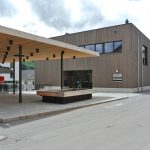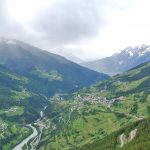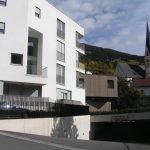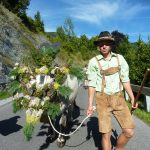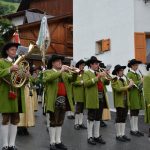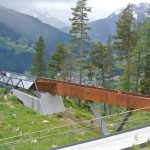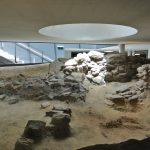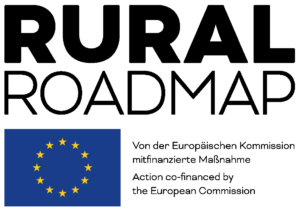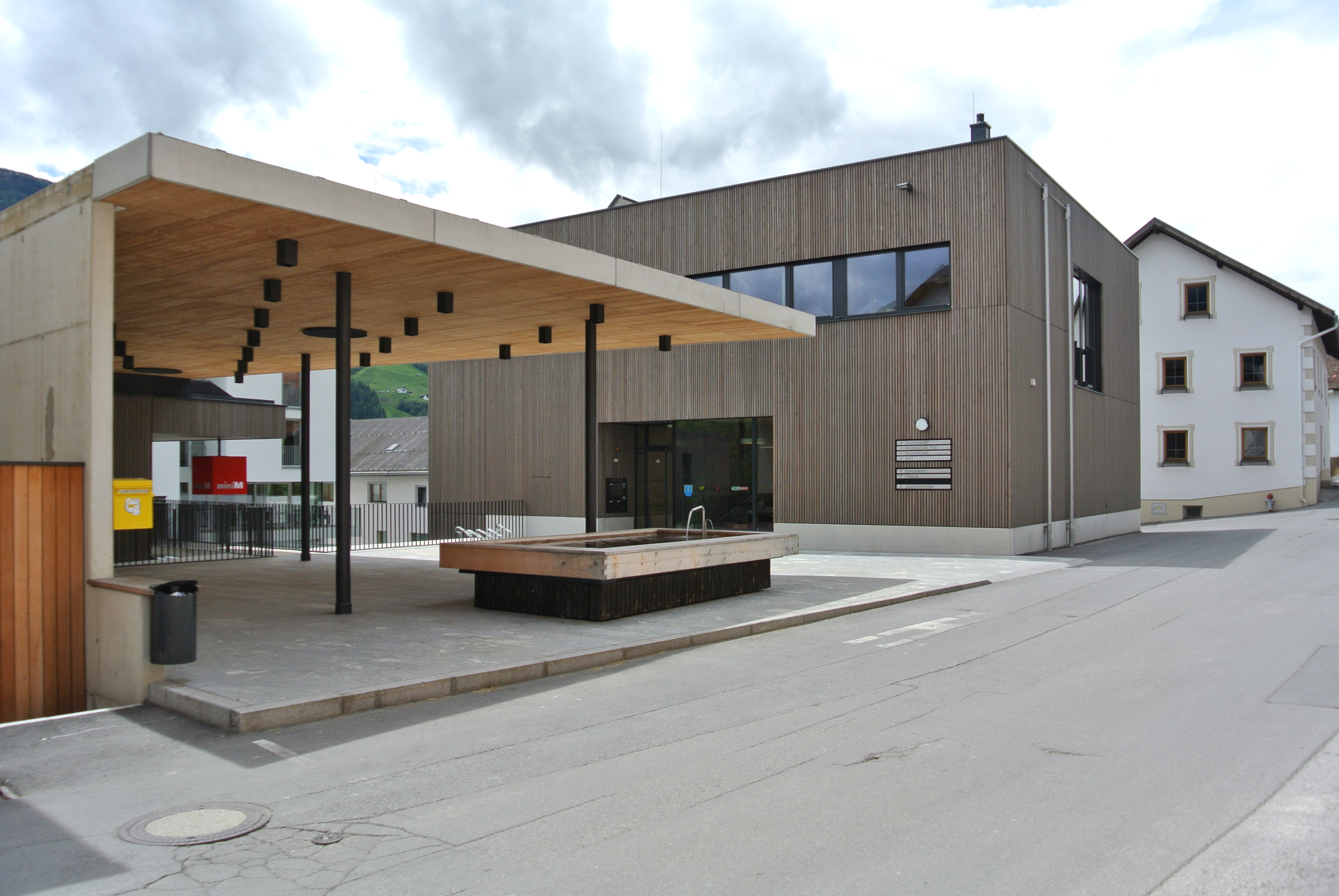
Fliess, Tyrol Austria
With its 3000 inhabitants, the municipality Fließ is geographically far apart – within two valleys, the Inntal and the Pitztal, between 840 and 2.786 m above sea level. Five main villages are complemented by a large number of hamlets – the district capital Landeck is 7km, the state capital is 80km away.
Like many other rural communities in the beginning of the 1980ies, Fliess was affected by emigration, vacancies of village cores, closings of local suppliers, decrease in working spaces and massive loss of functionality. The answer was not resignation – it was comprehensive, wholesome development work focused on both communal independency and regional networks.
One of the cornerstones of the change was a foresighted, resourceful settlement policy, which allowed new constructions in combination with the purchase of properties and vacant buildings within the village cores. Using architectural competitions involving the inhabitants, remarkable cultural constructions were emphasised and a variety of institutions were created, which led to a visible revitalisation and improvement of the quality of life. But not only the timely constructions – such as the church with its café. museum, multifunctional hall and offices, the nature park house and the community center – are highly appreciated. Consciousness for the architectural heritage was enforced, which can be seen through the excellent reconstruction of an Rhaeto-Romanic Mittelflurhaus as well as a characteristic tavern from the 15th century which was reconstructed for use for housing, offices and cultural reasons.
Within small spaces, the attractive village core now offers numerous functions regarding local supply of goods and services of all kind. A youth club, affordable starter apartments and assisted living are located here and show that the needs of all generations are considered. The great commitment of the community to maintain the small elementary school and to modernise the middle school, which also offers a kindergarten and day care centres and thus allows for yearlong high-quality care for children between the ages of one and 15, should also be mentioned. Also the content taught at the middle school is impressive – for example there is a free space class, which teaches economic, artisanal and artistic learning in the context of regional resources and characteristics. A great part of this can be linked to the closely knit cooperation between the school and the museum association as well as the Nature Park Kaunergrat.
This nature park was founded nine years ago and serves as a platform for care and careful valuation of natural and cultural landscapes, sustainable economisation and regional added value across communities. Today it serves as a successful instigator and an efficient point of intersection for nature protection, agriculture, tourism and education. The measures for a barrier-free Piller swamp as well as the natural and cultural panorama “Gacher Blick” are transregionally recognised. Said nature park also has a social role to play: asylum seekers residing within the municipality can not only work here but also receive an education to become reservoir helpers within the framework of a LEADER project in collaboration with the community. A valuable measure that emphasises the fact that integration is a win-win-situation and points out that the motto “being open” applies to Fließ also in regards to strangers who had to flee.
Other core elements of the village’s sustainable development are the modernization of communal alpine pastures and alpine dairy productions for the farmers within an agricultural association; the creation of additional working spaces through new companies of young entrepreneurs with communityy support, the efforts taken in the field of renewable energy as an E5-municipality as well as the communal broadband connection. Also worth mentioning is the impressive “Museum Landscape” – ancient relicts from Roman times are carefully and excellently exhibited with an archeological museum, a documentation cater named Via Claudia Augusta as well as an outdoor museum in the underground garage of the community center.Additionally, modern art is also relevant within the community, for example the exhibition “Houses” about Tyrollean construction culture, or “Not the Norm” which concerns people who are different, are located in the cultural center “Weißes Kreuz”, which offers space to charitable initiatives.
Due to its numerous coordinated measures – planned by the municipality and implemented with high civic participation – Fließ succeeded to revive the village. A process which is enriched by regional and transregional cooperation and presents a high amount of openness for new ideas. A process which succeeds to use the strong consciousness for history and identity in order to not refuse the new and different out of fear, but to embrace it.
Evaluated: 2016
